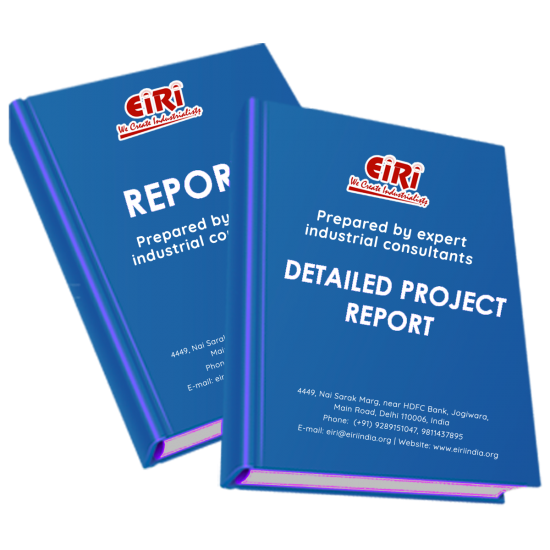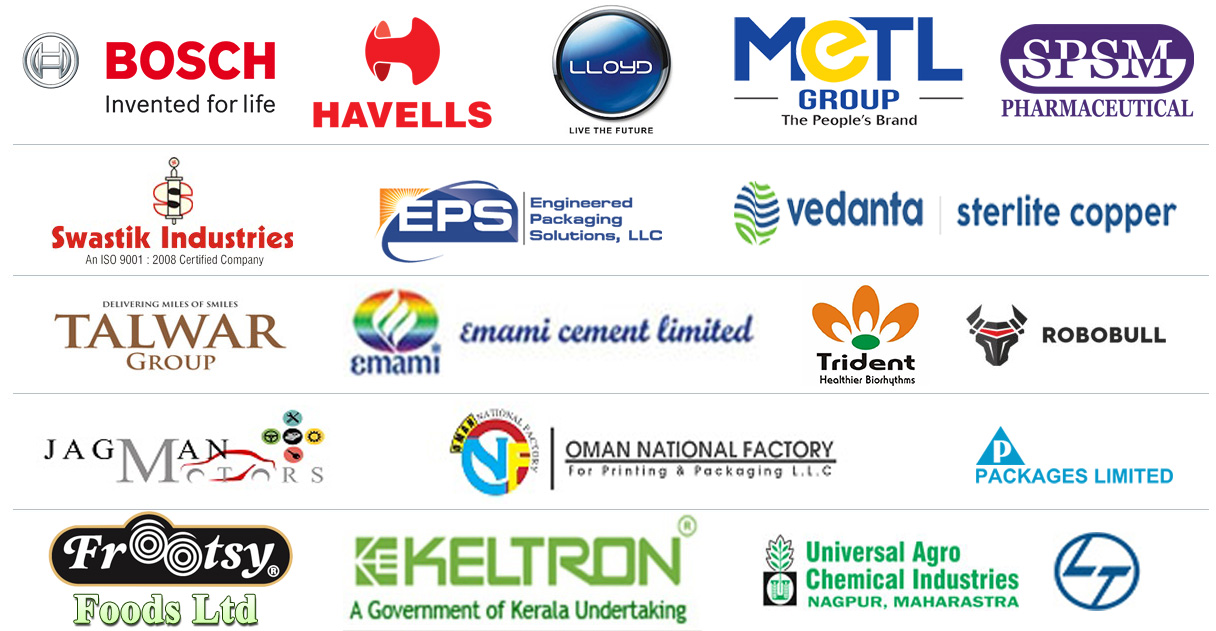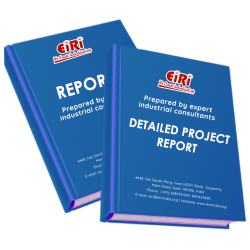Detailed Project Report on cattle feed (pashu aahar)

- More than 40 years of experience
- Managed by expert industrial consultants
- ISO 9001-2015 Certified
- Registered under MSME, UAM No: DL01E0012000
- 24/5 Research Support
Get your quesries resolved from an industry expert. Ask your queries before report or book purchase. - Custom Research Service
Speak to the our consultant to design an exclusive study to serve your research needs. - Quality Assurance
All reports are prepared by highly qualified consultants & verified by a panel of experts. - Information Security
Your personal & confidential information is safe & secure.
CATTLE FEED (PASHU AAHAR) [3613]
India possesses an enormous cattle (180 million) and buffalo (61 million) population but the annual milk production has reached only about 30 million tons. The low milk production is primarily dur to the poor potential of the animal and the lack of adequate nutrition. For the fullest exploitation of their genetic potentialities, better feeding must go hand in hand with better breeding. The principal feed resources for animal consumption in the country are crop residues like straws of wheat, rice and other cereals and stoves which are very poor in feed value. Even these ate in short supply. These are supplemented to some extent by relatively better quality fodders like cultivated leguminous and non liguminous fodder grasses and concentrates. The latter are formulated largely from agro-industrial by-product and forest wastes and small quantities of low-grade cereals with the present stock of feed and fodder resources available in the country, it is well impossible to meet the nutrient requirements of even the present day low-producing cattle and buffaloes such a situation is bound to aggravate difficulties in the feeding of better producing livestock such as cross bred lows in exploiting their full genetic potentiality for early growth, better reproduction and higher milk production. Livestock in the country, therefore, suffer widely from insufficient supply of nutrients. The unconventional agro-industrial by products and forest wastes may find a greater use as livestock feeds in coming years. The nutritive value of tropical feeds and fodder is lower than those grown in temperate region. This situation does not allow cows to consume maximum amount feeds, nor to get feeds of minimum allowable digestibility. It is not possible to anticipate any remarkable improvement in the feed situation in the near future and also in the supply of high digestible ingredients like waste grains. The digestibility of feed for meeting nutrient requirements of the cattle must bear relation to its intake capacity. In order that a cow with high milk yielding potential, which this country is looking forward to have in large numbers, produce milk to their inherited capacity, it will be necessary to provide adequate and balanced nutrition that should include high quality fodder and concentrates, mostly originating from agro industrial by products and wastes. The poor quality fodders like straws and stovers when chopped and fortified with urea, molasses and mineral mixture, improve in nutritive value and papatability. Such practice should be followed to maximize the utilization of valuable fodder resources. It is also necessary to preserve good quality forage as hay or silgae to provide for feed during the lean periods. With the availability of food quality fodder and some feed concentrate to supplement the ration in meeting the various nutrient requirements, the milk production will certainly go higher even with the existing cattle and buffalo population.
COST ESTIMATION
Plant Capacity 100 MT/Day
Land & Building (1 Acre) Rs. 2.39 Cr
Plant & Machinery Rs. 50 Lac
Working Capital for 2 Months Rs. 5.21 Cr
Total Capital Investment Rs. 8.23 Cr
Rate of Return 49%
Break Even Point 35%
INTRODUCTION
CLASSIFICATION
CATTLE FEEDS ARE OF 2 TYPE
CATTLE FEED OF 2 TYPES
FORM OF SUPPLY:
B.I.S SPECIFICATION FOR CATTLE FEED
SPECIFICATION OF COMPOUNDED CATTLE FEEDS IN INDIA
SCOPE
TYPES
REQUIREMENTS
DESCRIPTION
INGREDIENTS
PACKING AND MARKING
PACKING
MARKING
SAMPLING
TESTS
QUALITY OF REAGENTS
TABLE REQUIREMENTS FOR COMPOUNDED FEEDS FOR CATTLE
(CLAUSES 43 AND 7. 1)
TABLE REQUIREMENTS FOR COMPOUNDED FEEDS TO BE DECLARED
(CLAUSES 4.3 AND 7.1)
TESTING METHOD OF CATTLE FEED
METHOD FOR ESTIMATION OF VITAMIN D3
E-1 SAMPLE PREPARATION
HPLC CONDITIONS
CALCULATION
METHOD FOR ESTIMATION OF VITAMIN E
SAMPLE PREPARATION
HPLC CONDITIONS
CALCULATION
ESTIMATION OF AFLATOXIN
SAMPLE PREPARATION
PREPARATION OF COLUMN CHROMATOGRAPHY
SAMPLE PURIFICATION
HPLC CONDITIONS
CALCULATION
MARKET OVERVIEW
FEED CORN USAGE
TABLE INDIA: USAGE OF GRAINS, OIL MEALS AND OTHER FEED
INGREDIENTS
DAIRY FEED TREND
FEED AND FODDER INDUSTRY IN INDIA
FEED REQUIREMENT IN INDIA
FEED AND FODDER GAP IN INDIA
SCOPE FOR FEED INDUSTRY IN INDIA PRIMARILY STEMS FOR ITS
SHORTAGE AND HIGH DEMAND
GLOBAL FEED AND FODDER INDUSTRY
OVERVIEW OF LIVESTOCK SECTOR IN INDIA
MILK PRODUCTION IN INDIA:
PER CAPITA AVAILABILITY:
BREED WISE ESTIMATED MILK PRODUCTION 2016-17 BY BOVINES (%)
PRESENT MANUFACTURERS/SUPPLIERS
INGREDIENTS FOR COMPOUNDED CATTLE FEEDS
GRAINS AND SEEDS
GRAIN BY-PRODUCTS
OILCAKES AND MEALS
TUBER AND ROOTS
GREENS
WASTE MATERIALS AND INDUSTRIAL BY-PRODUCTS
CATTLE FEED
CHEMICAL COMPOSITION OF COMPOUND CATTLE FEED
FORMULATION CATTLE FEED
FORMULATION OF CATTLE FEED TO BOOST MILK PRODUCTION GROWTH
FORMULATION OF CATTLE FEED TO INCREASE MILK PRODUCTION
DIFFERENT FORMULATION OF CATTLE FEED
TYPE I
TYPE II
MANUFACTURING PROCESS OF CATTLE FEED
PROCESS IN DETAILS
RECEPTION
STORAGE OF RAW MATERIALS
GRINDING
BLENDING
MIXING
PELLETING
BAGGING
STORAGE & DISTRIBUTION OF FINISHED COMPOUNDED FEEDS
PROCESS FLOW DIAGRAM
PRINCIPLES OF PLANT LAYOUT
PLANT LOCATION FACTORS
EXPLANATION OF TERMS USED IN THE PROJECT REPORT
PROJECT IMPLEMENTATION SCHEDULES
PLANT LAYOUT
SUPPLIERS OF PLANT & MACHINERIES FOR CATTLE FEED (PASHU AAHAR)
MIXER/BLENDERS
PULVERIZERS
BAG FILLING AND SEALING MACHINES
WEIGHING MACHINE
RAW MATERIAL SUPPLIERS
MOLASSES FROM SUGAR MILLS
MAIZE
SALT
VITAMIN MIXTURE
APPENDIX – A:
01. PLANT ECONOMICS
02. LAND & BUILDING
03. PLANT AND MACHINERY
04. OTHER FIXED ASSESTS
05. FIXED CAPITAL
06. RAW MATERIAL
07. SALARY AND WAGES
08. UTILITIES AND OVERHEADS
09. TOTAL WORKING CAPITAL
10. TOTAL CAPITAL INVESTMENT
11. COST OF PRODUCTION
12. TURN OVER/ANNUM
13. BREAK EVEN POINT
14. RESOURCES FOR FINANCE
15. INSTALMENT PAYABLE IN 5 YEARS
16. DEPRECIATION CHART FOR 5 YEARS
17. PROFIT ANALYSIS FOR 5 YEARS
18. PROJECTED BALANCE SHEET FOR (5 YEARS)
How to Make Project Report?
Detailed Project Report (DPR) includes Present Market Position and Expected Future Demand, Technology, Manufacturing Process, Investment Opportunity, Plant Economics and Project Financials. comprehensive analysis from industry covering detailed reporting and evaluates the position of the industry by providing insights to the SWOT analysis of the industry.
Each report include Plant Capacity, requirement of Land & Building, Plant & Machinery, Flow Sheet Diagram, Raw Materials detail with suppliers list, Total Capital Investment along with detailed calculation on Rate of Return, Break-Even Analysis and Profitability Analysis. The report also provides a birds eye view of the global industry with details on projected market size and then progresses to evaluate the industry in detail.
We can prepare detailed project report on any industry as per your requirement.
We can also modify the project capacity and project cost as per your requirement. If you are planning to start a business, contact us today.
Detailed Project Report (DPR) gives you access to decisive data such as:
- Market growth drivers
- Factors limiting market growth
- Current market trends
- Market structure
- Key highlights
Overview of key market forces propelling and restraining market growth:
- Up-to-date analyses of market trends and technological improvements
- Pin-point analyses of market competition dynamics to offer you a competitive edge major competitors
- An array of graphics, BEP analysis of major industry segments
- Detailed analyses of industry trends
- A well-defined technological growth with an impact-analysis
- A clear understanding of the competitive landscape and key product segments
Need Customized Project Report?
- Ask for FREE project related details with our consultant/industry expert.
- Share your specific research requirements for customized project report.
- Request for due diligence and consumer centric studies.
- Still haven't found what you're looking for? Speak to our Custom Research Team
About Engineers India Research Institute:
Note: We can also prepare project report on any subject based on your requirement and country. If you need, we can modify the project capacity and project cost based on your requirement.
Our Clients

Our Approach
- Our research reports comprehensively cover Indian markets (can be modified as per your country), present investigation, standpoint and gauge for a time of five years*.
- The market conjectures are produced on the premise of optional research and are cross-accepted through associations with the business players
- We use dependable wellsprings of data and databases. What's more, data from such sources is handled by us and incorporated into the report
Why buy EIRI reports?
- Our project reports include detailed analysis that help to get industry Present Market Position and Expected Future Demand.
- Offer real analysis driving variables for the business and most recent business sector patterns in the business
- This report comprehends the present status of the business by clarifying a complete SWOT examination and investigation of the interest supply circumstance
- Report gives investigation and top to bottom money related correlation of real players/competitors
- The report gives gauges of key parameters which foresees the business execution





















